Evidence of the Use of Toxic Chemicals Against Russian Servicemen and civilian population
Occasionally, information comes in about use of various kinds of toxic chemicals by Ukrainian military and paramilitary formations against the Russian armed forces. In particular, improvised ammunition, gas grenades, as well as containers with an unknown chemical compound have been delivered by UAVs. Studies have shown that thermal improvised munitions contained chemical additives, some of which had been produced in the Czech Republic.
In early April 2023, cases of hand grenades with chemicals dropped from Ukrainian drones were reported. At the Russian Armed Forces' positions in the area of Pervomaiskoye (DPR) a Mavik-3 UAV was intercepted carrying a Teren‑6 gas grenade manufactured by Ecolog Research and Production Enterprise (Kiev). The subsequent analysis confirmed that the ammunition was filled with a mixture of CS irritants and pelargonic acid morpholide.
Teren‑6 gas grenade is in service with the National Guard and special units of Ukraine. It was a part of the equipment of the Ukrainian peacekeeping forces in Iraq and Yugoslavia, and was exported to a number of foreign countries. The modern modification – Teren‑6D grenade has a firing range of 60–80 m.
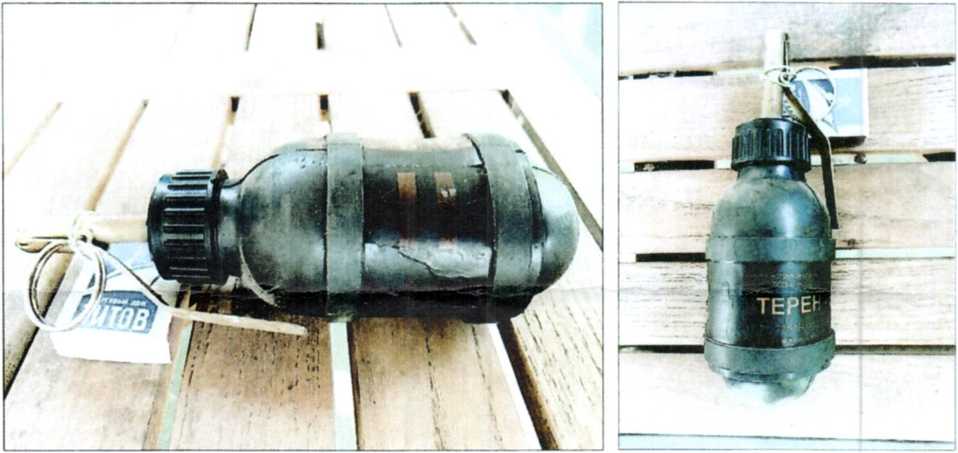
Pelargonic acid morpholide is an oily transparent liquid with a yellowish tinge. When inhaled, it causes cough, burning sensation in the nasopharynx, mucus from the nose, eye irritation, lacrimation, nausea. Irritation of the upper respiratory tract is more pronounced than the lacrimation effect. This chemical compound has some blistering effect. It is one of the most persistent irritants – up to 50 percent of the initial amount remains on clothes for 80‑100 days when stored open and up to two years when stored closed.
On 30 April 2023, the Ukrainian Supernova+ Telegram channel published a video featuring a chemical grenade dropped on the Russian Armed Forces' positions. An aerosol cloud formed at the munition drop site (screenshots of the above Telegram channel). The injured personnel were evacuated from the contaminated area.
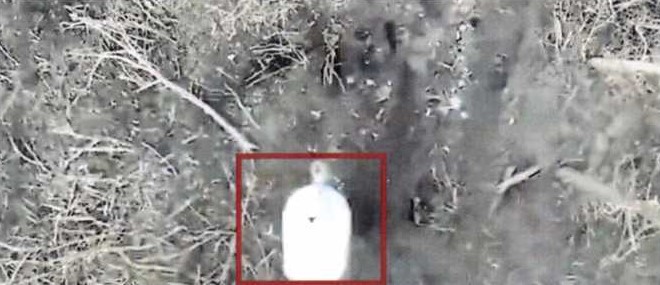
A chemical grenade dropped from a UAV at the Russian Armed Forces' positions
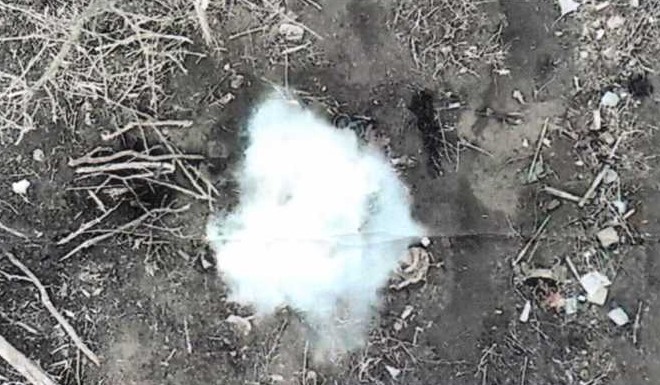
An aerosol cloud forms at the munition drop site
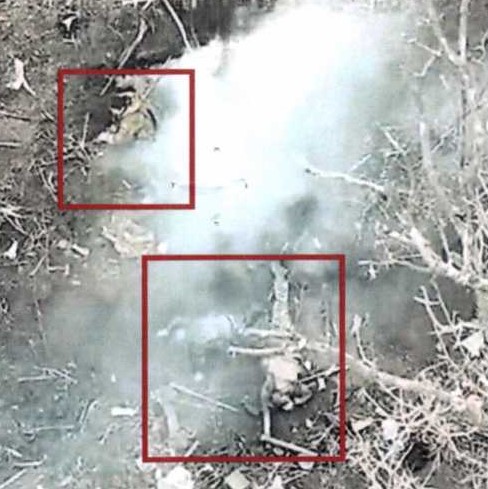
Russian soldiers fleeing the Ukrainian special munition detonation area
Moreover, despite numerous insinuations inspired by Kiev’s regime security services in the Internet about alleged use by the Armed Forces of the Russian Federation of Soviet-type K-51 gas grenades with CS-gas in the zone of the special military operation, there is real video evidence of use of such grenades specifically by Ukrainian militants and their foreign mercenaries.



In January 2023, a video shot by Robert Browdy (Vladimir Batsko), commander of Magyar Birds the Ukrainian separate tactical aerial reconnaissance group, was replicated on the Internet. The footage features Ukrainian militants preparing small UAVs designed to drop self-made ammo and cylinders loaded with toxic chemicals. As V. Batsko stated himself, they were handed over by a man with the call sign "Shaman" from the Armed Forces of Ukraine 63rd separate mechanized brigade. The footage clearly shows that some of the products are stored in a refrigerator.
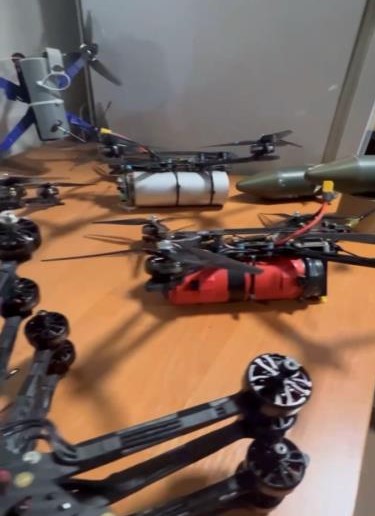
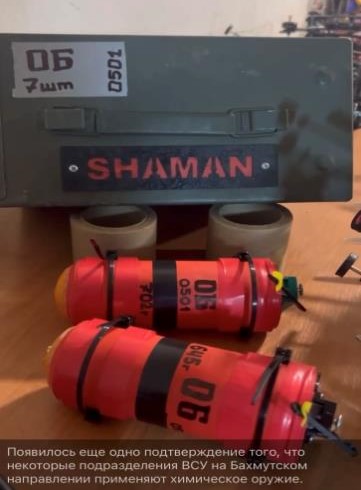

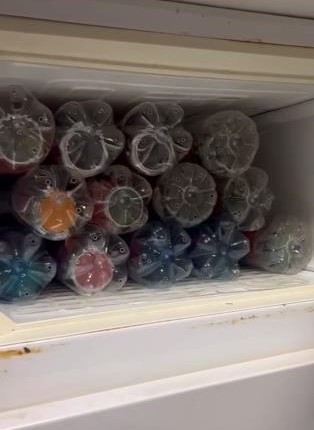
In February 2023, members of the control and artillery reconnaissance battery of the 110th separate mechanized brigade of the Ukrainian Armed Forces shared a video of a UAV strike against members of the Armed Forces of the Russian Federation on Ukrainian channels. The video as stated by the Ukrainian side captured one of the killed servicemen convulsing after a chemical munition was dropped.
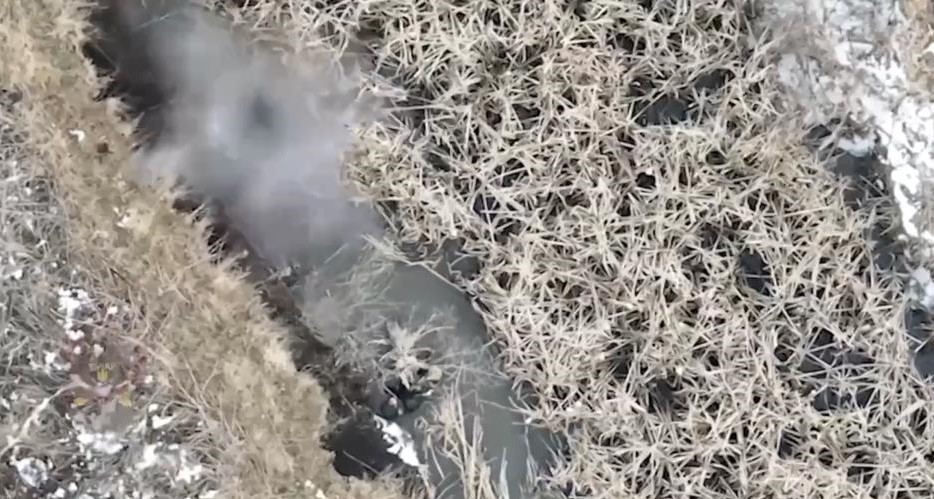
In mid-June 2023, Ukrainian armed groups used a kamikaze UAV carrying a plastic container with a toxic substance but no explosive device against positions of the Armed Forces of the Russian Federation in the vicinity of the settlement of Rabotino, Zaporozhye region. The results of tests conducted on 16 June 2023 by the laboratory of the Russian Ministry of Defense (city of Melitopol) showed the presence chloroacetophenone in mixture with chloropicrin.
There is evidence of the use of toxic chemicals, including those listed in the Schedules of the Annex on Chemicals to the Chemical Weapons Convention, by the Ukrainian special services against Russian servicemen and representatives of the administration of the new regions of the Russian Federation – Donetsk People's Republic, Lugansk People's Republic, Zaporozhye and Kherson regions. These include such substances as ricin, BZ analogues, hydrocyanic acid and its salts.
One of the substances found in laboratory tests of samples is an analogue of BZ, a psychotomimetic toxic agent (included in Schedule 2 of the CWC), and was studied in the 1960s and 70s at the Edgewood Arsenal (USA) under code name EA 3167. The synthesis of the substance is quite complicated; it could only be produced in a very well-equipped chemical laboratory. The substance was allegedly supplied from abroad.
Thus, it can be stated that the Ukrainian armed formations actively use scheduled chemicals, riot control agents and chemicals that are not included in the CWC Schedules.
Attack by Ukrainian militants at the Sumykhimprom industrial plant (Sumy) on 21 March 2022
On 21 March 2022, in Sumy, Ukrainian nationalists committed a planned provocation – detonation of pre-mined containers with ammonia. The purpose was the mass poisoning of the residents of Sumy region and the assignment of responsibility for this to units of the Armed Forces of the Russian Federation, of which the Russian Defense Ministry had warned two days earlier. The area of exposure was 2.5 km, due to the change in wind direction, civilians were not affected (below are screenshots and photos taken from Ukrainian social media sources[1]).


Attack at the «Zarya» industrial plant in Rubezhnoye (LPR) on 5 April 2022
Before retreating from Rubezhnoye (LPR), Ukrainian militants blew up a tanker with nitric acid in the first workshop of the «Zarya» chemical plant. The tanker was blown up taking into account the direction of the wind towards the village of Kudryashovka, which had been liberated by Russian troops. The toxic cloud spread over an area inhabited by about 10,000 people (Ukrainian social media sources[2]).

Second Attack at the «Zarya» industrial plant in Rubezhnoye (LPR) on 9 April 2022
The Armed Forces of Ukraine blew up another container with nitric acid on the territory of the «Zarya» chemical plant in Rubezhnoye for provocative purposes, which resulted in the release of toxic substances into the atmosphere. The city administration recommended that residents hide in shelters, prepare masks impregnated with a special solution, and close doors and windows tightly (Ukrainian social media sources[3]).
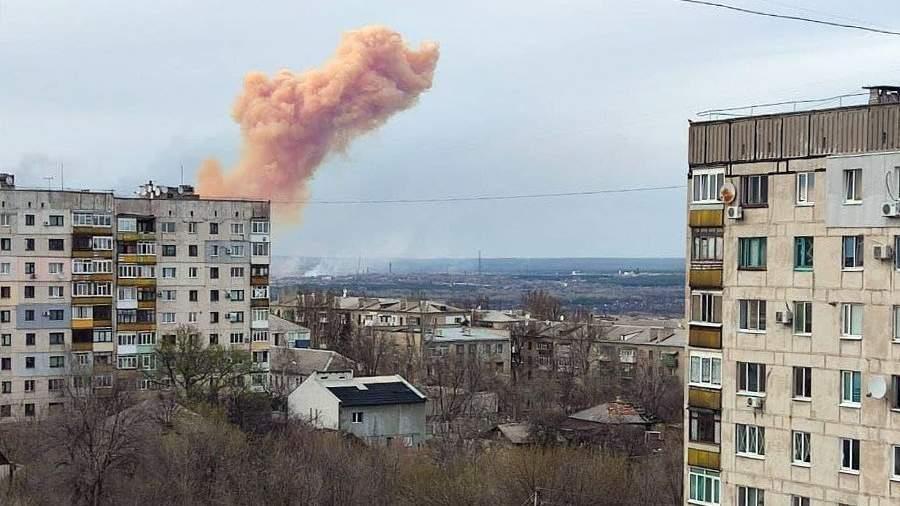
Attack near Dolghenkoye Settlement, Kharkov region, 11 May 2022
Ukraine's security services and nationalist armed groups blew up tankers with fertilizers, presumably ammonium nitrate, resulting in an orange-coloured cloud. The purpose of the tanker detonation was a provocation in order to blame the Russian Armed Forces for the incident (Ukrainian social media sources[4]).
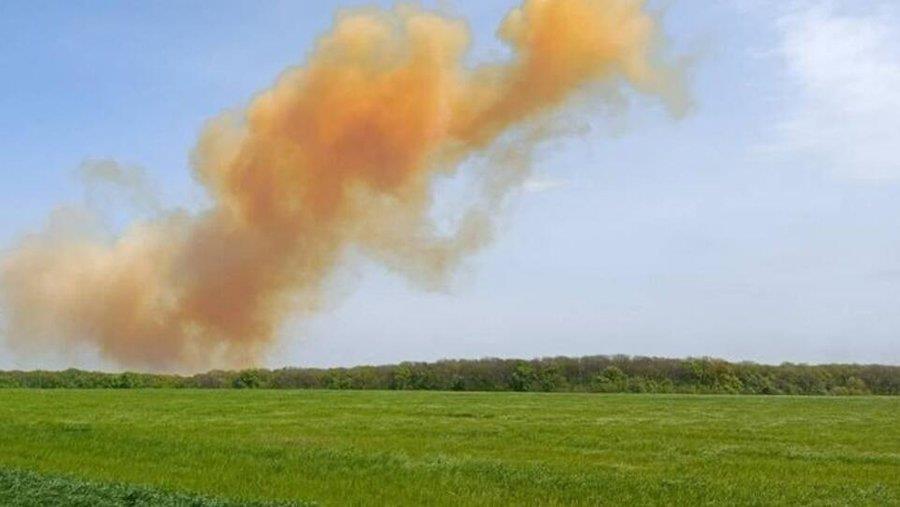
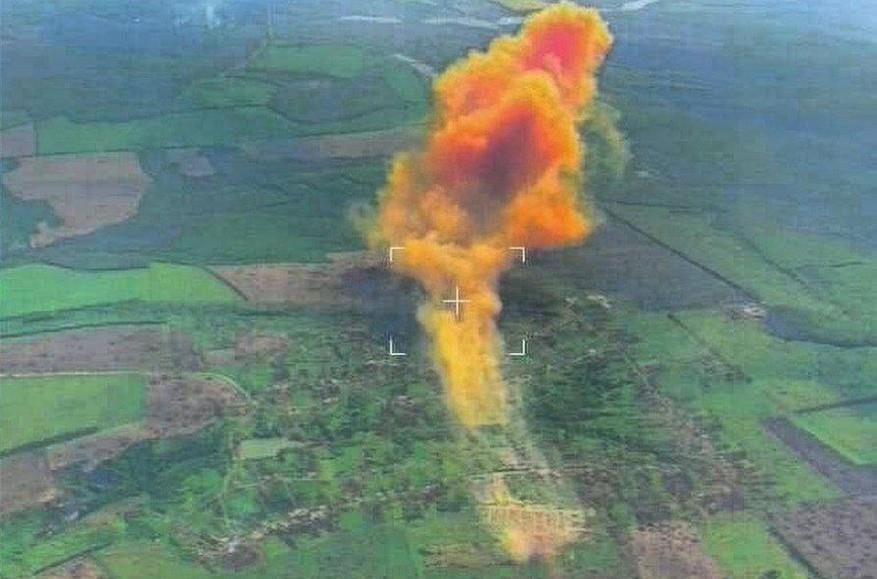
Attack at the «Azot» industrial plant in Severodonetsk (LPR), 31 May 2022
Ukrainian armed formations retreating from Severodonetsk (the 79th Air Assault Brigade of the Ukrainian Armed Forces) detonated tankers with nitric acid at the Severodonetsk «Azot» plant in order to stop advancing units of the Russian Armed Forces and DNR militia by creating a chemical contamination zone (Ukrainian social media sources[5]). An orange-coloured toxic cloud formed and moved towards Kremennaya and Rubezhnoye, with civilians affected.
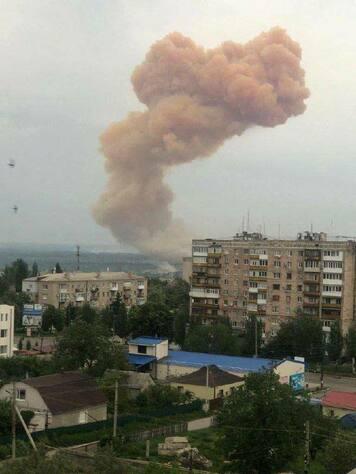
Shelling of the «Koksokhim» industrial plant in Avdeevka Settlement (DPR), 11 June 2022
As a result of targeted shelling by Ukrainian troops, tankers containing toxic chemicals exploded at the «Koksokhim» chemical plant near Avdeevka settlement (DNR).

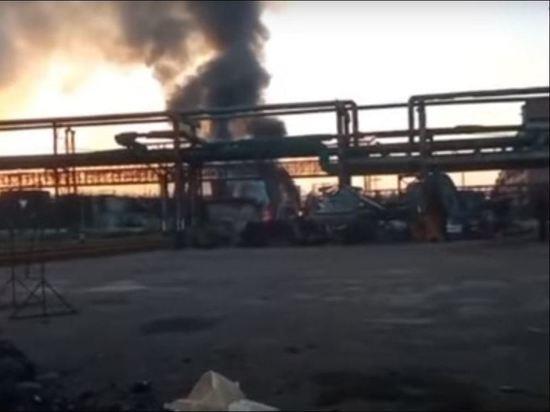
Attack at the Industrial Zone in Severodonetsk (LPR), 18 June 2022
According to the Ukrainian media «Country.ua»[6], an explosion took place in the industrial zone of Severodonetsk, Lugansk People's Republic, accompanied by a mushroom cloud of pink color. The area of the attack was controlled by Ukrainian formations, which might have numbered up to
2,500 people, up to a quarter of them foreign mercenaries.

Shelling of the Donetsk Brewery (Donetsk), 10 August 2022
As a result of targeted shelling by Ukrainian armed formations – the 110th Separate Brigade – from the direction of Avdeevka settlement, a 40‑tonne container of the cooling system was damaged and over 6 tonnes of ammonia leaked from the territory of the Donetsk brewery. The explosion caused a toxic cloud that spread over an area of 2 square kilometers. One employee died and two received severe respiratory tract burns (photo by the administration of Donetsk Brewery Ltd).
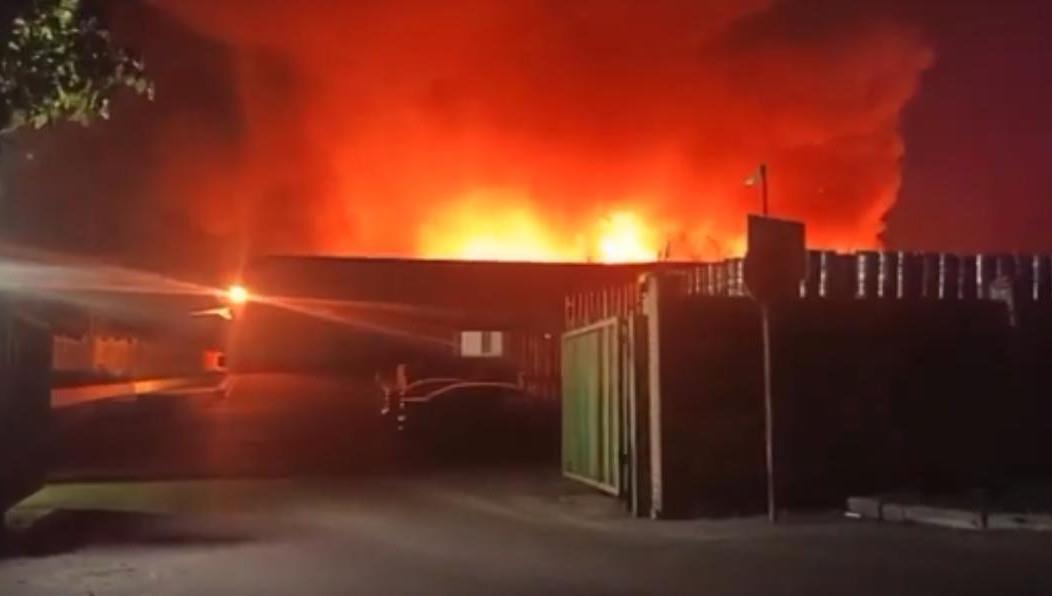
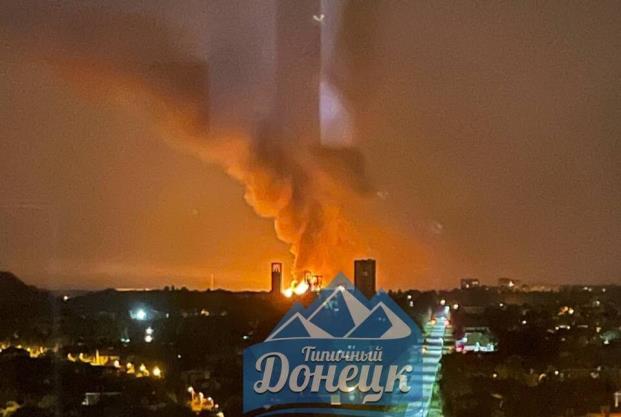

Demolition of the Ammonia Pipeline Near the Village of Maksyutovka, Kharkov Region, 5 June 2023
On 5 June 2023, Ukrainian special services detonated the Tolyatti-Odessa ammonia pipeline near the village of Maksyutovka, Kharkov region for provocative purposes. The explosion spread a toxic cloud that, however, as a result of a sudden change in wind direction moved towards Ukrainian positions in Kupyansk district of Kharkov region.


